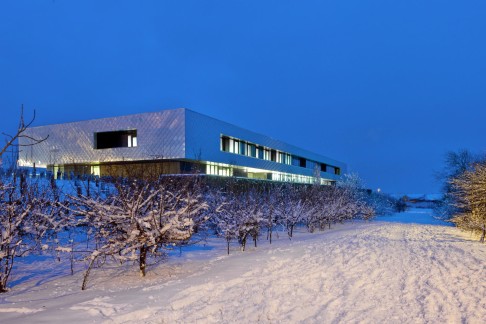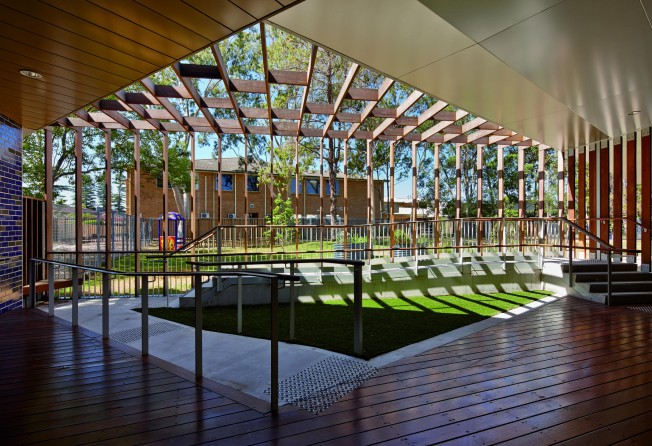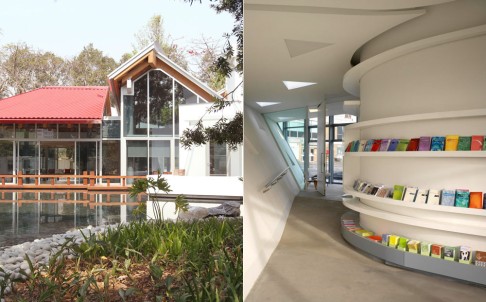
Vital signs of comfort with a view to better health care
Architects seizing on a belief that good design can boost patient recovery are sweeping away institutional features in favour of a spa-like feel

Cure sometimes, treat often, comfort always, wrote Hippocrates. In today's health care setting, architects are designing spaces that recognise one of the key tenets held thousands of years ago by the "father" of Western medicine - that of comfort's role in healing.
From hospitals to cancer centres to mental-health facilities globally, some of the leading lights in architecture are designing comfortable spaces inspired by nature, following the observations of Florence Nightingale who wrote, from her field hospital, that "being able to see out of a window, instead of looking at a dead wall", was "quite perceptible in promoting recovery".
For CircleBath in Bath, England - the first hospital project for Foster + Partners - the design team dug deep into hospital design, to understand its role in healing.
"The biggest thing we realised was if the patients were more relaxed, their healing time was quicker," said Darron Haylock, partner on the project. "That was at the heart of our design: to try to make an environment where the patients feel more relaxed, more comfortable, from the moment they walk in to when they leave."
The architects removed visual references that people associate with hospitals - such as corridors and excessive signage - and designed a space that feels more like a boutique-hotel spa. "As you move through the building, it's seamless," said Haylock.
Natural light filters in through a central atrium and, most unusually, the operating theatres have windows. All patient rooms have views to the outside landscape, window boxes planted with herbs and flowers, and even timber floors, which beats institutional vinyl in making people feel at home.
Since the late Margaret (Maggie) Keswick Jencks, herself an architect and landscape designer, first conceived that good design could prove restorative to cancer patients like herself, world-renowned architects including Frank Gehry, Rem Koolhaas, Steven Holl and Zaha Hadid have turned their talents to enhancing environments for the ill, through the British charity Maggie's.
As noted by Zaha Hadid of Maggie's Fife (one of 17 Maggie's cancer support centres built in the grounds of public hospitals since 1996): "There is increasing recognition of the importance of this kind of support in conjunction with medical treatment."
The first Maggie's Centre outside Britain opened in Hong Kong, in the grounds of Tuen Mun Hospital, in March 2013. For its design, Canadian-American Pritzker Prize-winning architect Frank Gehry, who also designed Maggie's Dundee in Scotland, took inspiration from Chinese architecture, in the Suzhou tradition. The building is arranged as a series of connected pavilions, encouraging movement between the interior and the landscape. Rooms open out to the surrounding gardens or have private terraces overlooking the pond. There is a public living and dining area that serves as the focal point of the building, with views of the ponds and gardens.
In the mental health sector in Australia, Woods Bagot is creating built environments that break from conventional institutional architecture to provide "inner sanctuaries" with a more human quality. Says Domenic Alvaro, design leader at Woods Bagot: "By creating spaces that are less institutional and incorporating greenery and garden and the feel of 'home', we can aid the healing process."
The firm was commissioned by the New South Wales government on three recent projects: Nepean Mental Health Centre, completed in March; Wagga Wagga Mental Health Unit, completed in November 2013; and Woy Woy Rehabilitation Unit, completed in June 2013.
Stanton Kroenert, health leader at Woods Bagot, believes "the impact of architecture and design on health environments is vital, enabling advances in health care, such as the idea of salutogenic care, which focuses on the factors that make us well, not just on those that make us unwell".
The design principles used to make health care spaces more appealing are taken from other typologies, such as residential design, says Alvaro. "Things like access to sunlight, greenery and beautiful things like design and art have been proven to aid the healing process and reduce average lengths of stay," he said.
It is a worldwide phenomenon, says Kroenert, as governments and other health care providers realise the importance of design in creating beneficial environments that aid healing as well as providing the latest workplace design for staff. Cost is always a factor in health care provision, but Kroenert asserts that budget is not a barrier to the notion of healing by design.
"Woods Bagot's health facilities including hospitals, medical centres, laboratories and hospices range in value from less than A$1 million (HK$7.1 billion) to more than A$1 billion," he said. "We are at the cutting edge of health design especially in the realm of providing universal care rooms which allow a continuum of care from birth through to death. This is leading to some exciting new forms of health architecture."
